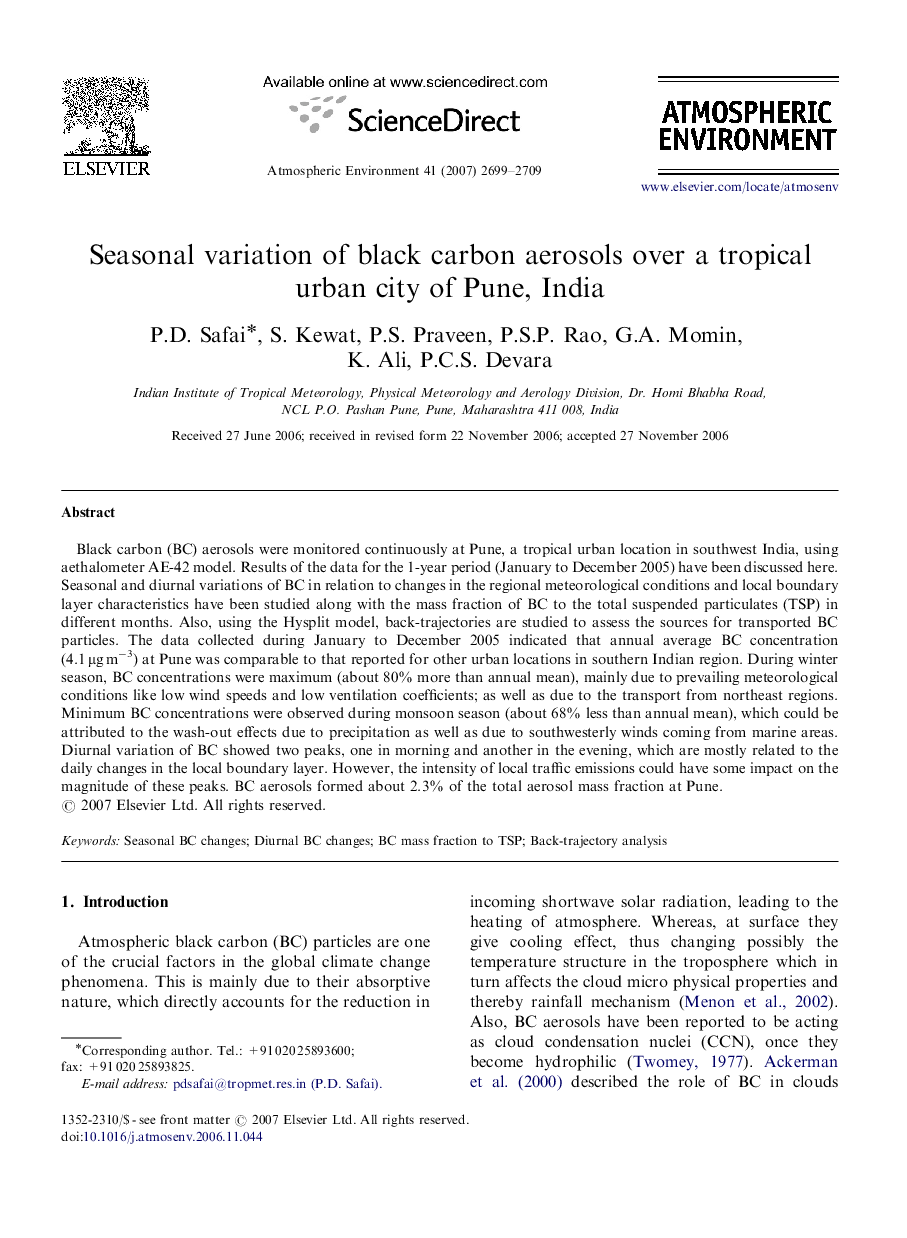| Article ID | Journal | Published Year | Pages | File Type |
|---|---|---|---|---|
| 4442934 | Atmospheric Environment | 2007 | 11 Pages |
Black carbon (BC) aerosols were monitored continuously at Pune, a tropical urban location in southwest India, using aethalometer AE-42 model. Results of the data for the 1-year period (January to December 2005) have been discussed here. Seasonal and diurnal variations of BC in relation to changes in the regional meteorological conditions and local boundary layer characteristics have been studied along with the mass fraction of BC to the total suspended particulates (TSP) in different months. Also, using the Hysplit model, back-trajectories are studied to assess the sources for transported BC particles. The data collected during January to December 2005 indicated that annual average BC concentration (4.1 μg m−3) at Pune was comparable to that reported for other urban locations in southern Indian region. During winter season, BC concentrations were maximum (about 80% more than annual mean), mainly due to prevailing meteorological conditions like low wind speeds and low ventilation coefficients; as well as due to the transport from northeast regions. Minimum BC concentrations were observed during monsoon season (about 68% less than annual mean), which could be attributed to the wash-out effects due to precipitation as well as due to southwesterly winds coming from marine areas. Diurnal variation of BC showed two peaks, one in morning and another in the evening, which are mostly related to the daily changes in the local boundary layer. However, the intensity of local traffic emissions could have some impact on the magnitude of these peaks. BC aerosols formed about 2.3% of the total aerosol mass fraction at Pune.
